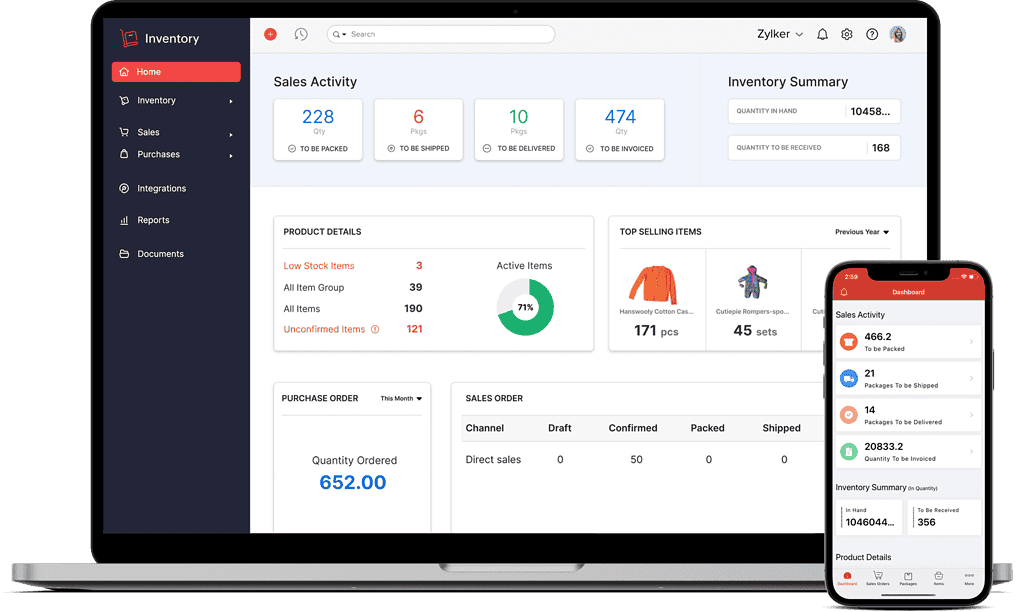Best Warehouse Inventory Software Solutions in 2025
Imagine a warehouse brimming with high-demand products, perfectly slotted, and ready to ship—until chaos erupts from inaccurate stock counts, missed orders, and frustrated customers. The culprit? Manual inventory management.
Enter the age of smart warehouses—powered by warehouse inventory software that eliminates guesswork and replaces it with real-time visibility, automation, and control.

What Is Warehouse Inventory Software?
Warehouse inventory software, often referred to as a Warehouse Management System (WMS), is a digital tool that automates and streamlines the tracking, storage, picking, packing, and shipping of inventory within a warehouse.
Think of it as the brain behind your warehouse operations. From barcode scanning to real-time stock updates, a modern Warehouse Management System (WMS) reduces manual labor, increases accuracy, and enhances fulfillment speed.
Core Features of a Modern WMS:
Product Tracking: Monitor every SKU from inbound receipt to outbound shipment, with detailed bin locations and movement logs.
Barcode Scanning: Speed up receiving, picking, and packing processes with handheld barcode scanners.
Order Fulfillment Optimization: Automate pick lists, wave picking, batch picking, and packing instructions to reduce errors.
Real-Time Reporting & Analytics: Access dashboards and reports that display stock levels, picking accuracy, turnover rates, and labor productivity.
Multi-Warehouse Support: Manage inventory across multiple sites or 3PLs from one centralized dashboard.
Integration with ERPs and eCommerce Platforms: Seamlessly sync inventory with platforms like Shopify, Amazon, NetSuite, and QuickBooks.

Why Warehouse Inventory Software Is a Game-Changer
If you’re still using spreadsheets, whiteboards, or basic stock tools, you’re already behind. Here’s what a robust WMS can do for you:
🚚 Improve Accuracy & Visibility
Automated tracking eliminates guesswork and ensures every product is accounted for—no more overstocking or understocking.
📦 Speed Up Order Fulfillment
Streamlined pick-and-pack workflows reduce handling time and expedite delivery, especially crucial for e-commerce warehouses.
🔧 Reduce Operating Costs
Reduce labor costs, optimize storage space utilization, and minimize product handling by implementing smarter inventory placement.
📊 Enable Smarter Decisions
Get access to demand forecasting, replenishment insights, slow-moving item reports, and cycle counting efficiency—all from one dashboard.
⚖️ Scale with Confidence
As your business grows, WMS helps maintain control by supporting automation, multi-site management, and integrations with fulfillment partners.

🏆 Best Warehouse Inventory Software in 2025
Here’s a breakdown of the top warehouse inventory systems to consider this year, based on features, scalability, and user reviews.
1. Zoho Inventory

Best for: Small to medium-sized businesses
Key Features:
Cloud-based inventory tracking
Order management and shipping integrations
Barcode scanning and batch tracking
Integrates with Zoho Books, Shopify, Amazon, and eBay
Pros: Affordable, easy to set up
Cons: Limited warehouse automation capabilities
2. Fishbowl Inventory

Best for: Manufacturers and QuickBooks users
Key Features:
Inventory tracking, work orders, and BOM
Manufacturing module with MRP functions
Multi-location support
Strong QuickBooks integration
Pros: Ideal for small manufacturers
Cons: Windows-only (Fishbowl Online in beta), steeper learning curve
3. ShipBob WMS

Best for: eCommerce fulfillment and DTC brands
Key Features:
End-to-end fulfillment with real-time inventory
Built-in shipping rates and order routing
Integrates with Shopify, WooCommerce, BigCommerce
Pros: Offers full 3PL services + self-managed WMS
Cons: Better suited for brands using ShipBob’s fulfillment network
4. Manhattan Associates WMS

Best for: Enterprise-level warehousing
Key Features:
AI-powered slotting and labor management
Advanced task orchestration and IoT integration
Cloud-native, scalable architecture
Pros: Best-in-class functionality
Cons: Expensive, requires integration expertise
5. Odoo Inventory

Best for: Businesses using Odoo ERP
Key Features:
Integrated with purchasing, sales, and manufacturing
Barcode scanning, drop-shipping, and multi-warehouse support
Double-entry inventory for traceability
Pros: Highly customizable
Cons: Requires setup time, best used with other Odoo modules
How to Choose the Right Inventory Software
When selecting warehouse inventory software, consider these critical factors:
| Criteria | What to Look For |
|---|---|
| Business Size | Choose software that fits your order volume and SKU count. |
| Tech Stack | Ensure integration with your current ERP, eCommerce platform, and shipping tools. |
| Warehouse Complexity | Multi-warehouse support? Kitting? Serialized inventory? Choose accordingly. |
| User Friendliness | Easy onboarding for staff is key to success. |
| Customer Support | Look for 24/7 support or local assistance for troubleshooting. |

Final Thoughts: WMS Is the Key to Scalable Warehousing in 2025
With supply chains under pressure and customer expectations rising, warehouse inventory software isn’t optional—it’s essential. Whether you’re fulfilling DTC orders or replenishing retail shelves, a smart WMS helps you work faster, smarter, and with fewer errors.



